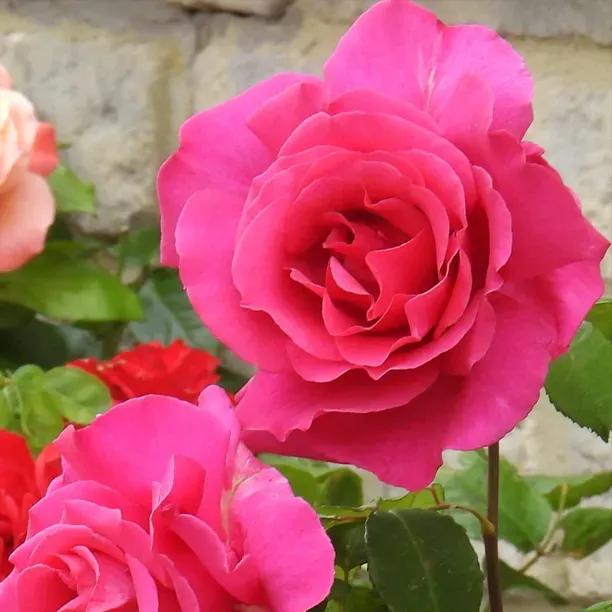Starlight Express Climbing Roses
Honest Delivery Prices- Colour: Vivid Pink
- Flower Shape: Double
- Fragrance: Medium
- Flower Period: Repeats in flushes June-October
- Leaves: Mid-green, glossy.
- Height x Spread: 2.5m x 2m
Recommended extras
Description
Rosa Starlight Express - Climbing Roses. 4 Litre Pots.
A deep, vivid pink climbing rose with a good scent. The flowers come in rapid, close to continuous flushes from June to October. Glossy, quite light green foliage. To 2.5m.
Browse our Climbing Roses or all of our Rose Bushes.
Features:
- Colour: Vivid Pink
- Flower Shape: Double
- Fragrance: Medium
- Flower Period: Repeats in flushes June-October
- Leaves: Mid-green, glossy.
- Height x Spread: 2.5m x 2m
Growing Starlight Express Roses
Good, well drained soil, a good amount of sun, and something to grow it up is all you need. Roses thrive on clay as long as it is not too waterlogged in winter.
Planting Instructions
How to Plant Climbing Roses
You can order bareroot roses for delivery from November to March. Containerised plants are available year round.
Soak your roses' roots or pots for a little while before planting. This is an opportunity to prune the stems down to six to ten inches, and inspect the roots to trim off damaged ones.
Choose a spot with reasonable light: semi-shade will do, but full shade will not. Prepare the soil by breaking it up with a fork while removing roots, stones, etc.
- On dry, sandy and chalky soil, dig a big hole, then backfill it with a soil mix improved with three quarters organic material, including compost and manure for fertility, and leafmould for water retention.
- On good garden soil, adding some organic material is beneficial, especially manure. Dig a shallow hole, deep enough to allow the graft/union to settle right at soil level, and wider than the roots.
- On really heavy clay, which rose roots love, you do not need to improve the soil by digging stuff into it; use organic material as a mulch on top of the soil afterwards.
Spread some Rootgrow mycorrhizal fungi around the bottom of the hole, where it will make contact with the roots.
Arrange a mound on the floor of the hole to set your rose's roots on, so they spread out, and the graft-union is slightly above soil level. Backfill the hole with the planting mix, firming it down as you go, at first with your hand to fix the rose in place, and then with your heel to firm it. Dust some bonemeal on the surface and water in thoroughly. In the process, the soil will settle down so that the graft is clear of the soil.
How to prepare and plant a bareroot climbing rose video.
Mulch well in spring, and keep well watered during dry periods for the first year. Deadhead repeating roses to encourage continuous flowering.
Newly planted roses shouldn't need much rose food, maybe a dash on poor dry soils. When they are settled in the second year onwards, feed them during the growing season with homemade compost teas and foraged sea weed, or some of our Biofertiliser rose food.
Mature shrub roses need gentle pruning compared to floribundas and hybrid teas. Prune to tidy the shape in winter. First remove the usual dead, diseased and badly positioned wood, ideally cutting out whole shoots back to a main stem, or outward facing bud. Then remove the wispiest stems, and some of the oldest wood from the centre.
Did You Know?
Along with Sweet Memories and Peter Pan, it is dedicated to Great Ormond Street Children's Hospital.
Released in 1997, registration code TROBstar.


